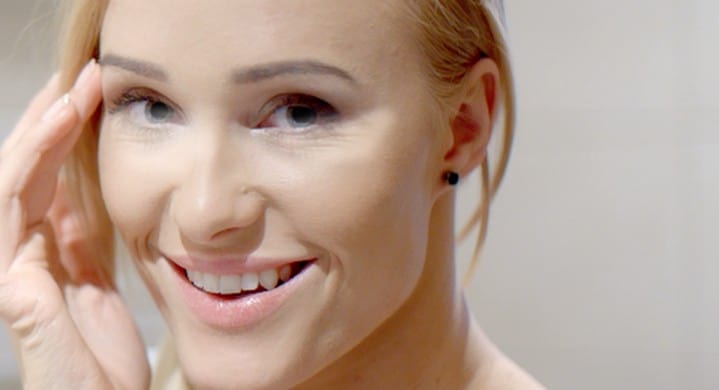
Human brains are hardwired to recognize faces. When a video has a person talking in it, customers are more likely to connect with the video. When the audience can see the human behind the voice, they are more likely to trust what you are telling them. Speech is perceived by more than just auditory cues, we take in visual ones as well.
As a species, we are hardwired to be judgmental. Many people do not trust the information they read online. A study done in 2009 found that rather than trusting the people with the most expertise in a subject, people are more likely to trust those they believe have their best interests at heart. Psychologists at Princeton discovered that in only a tenth of a second, we form impressions of strangers from their faces alone, and our brain then responds based on how trustworthy we find their face to be.
In video, it is important to note that just having a trust worthy looking person is not going to make your audience listen to the message presented in your video. Remember, speech perception relies on both visual and auditory cues. The combination of both a great speech and a trustworthy face, among other things, is what will make your video the most compelling.
So, how can you get people to want to listen to your video? There are a few items that are critical to building the trust you deserve. First, you must be authentic. Be you. Dont try to be someone you are not. If you look, sound, or feel uncomfortable, it will show, and many viewers will see, hear, and feel it. Second, demonstrate your integrity by showing us how much you believe in what you are saying. Again, if you come across as fake or phony, it will show. A good analogy is a dogs behavior when certain people walk into the room. Some people are deathly afraid of dogs and the dog can sense it immediately. We humans have learned to do something similarto sniff out false and bogus people. Some are better at it than others are, but we all have this ability. Third, people dont care how much you know, they want to know how much you care. If you are genuine in caring about your viewer, they will sense it and feel a higher level of comfort in listening to you speak. Finally, speak the truth. Dont sugarcoat or exaggeratethese all come across counter to the previous three and will completely destroy your credibility.
This can be applied to all parts of speaking, but with video, you need to be aware of more than just your speech. Your background shouldnÔÇÖt distract from your message. You are what they should be paying attention to, not the bookshelf of whatÔÇÖs happening outside the window behind you. Add text to the screen to help reinforce what you are saying. It also focuses the viewer on what you are saying and subtly tells them, ÔÇ£This is important!ÔÇØ Have confidence and be positive while on camera and use transitions when speaking. It helps the viewer follow along when you say things like, ÔÇ£Now that IÔÇÖve covered XYZ, letÔÇÖs move on to ABC.ÔÇØ This transition tells the viewer where you are and what to expect next. Sound like English class all over again? Good! It should.
Having just a trustworthy face is not enough to make people want to listen to your video; however, neither is just having a good speech. If you take the time to focus on all aspects of your video, including whatÔÇÖs in the background, what youÔÇÖre wearing, and even the music that is playing, your video will have a much better chance of being listened to and acted upon. You want to connect to your audience, so give them what they need. Comfort, trust, integrity.
As always, we coach clients how to perform better on camera during our shoots. When we have someone who is struggling on camera, we do our best to help him or her relax and speak clearly. After all, you know the subject matter, just talk as if youÔÇÖre talking to a friend. WeÔÇÖll do the rest! Let us know when youÔÇÖre ready to get started.
Source: Wistia Blog. (2017). Why Videos Featuring Humans are Easier to Trust. Retrieved from: https://wistia.com/blog/make-trustworthy-videos-with-humans on September 28, 2017. 















